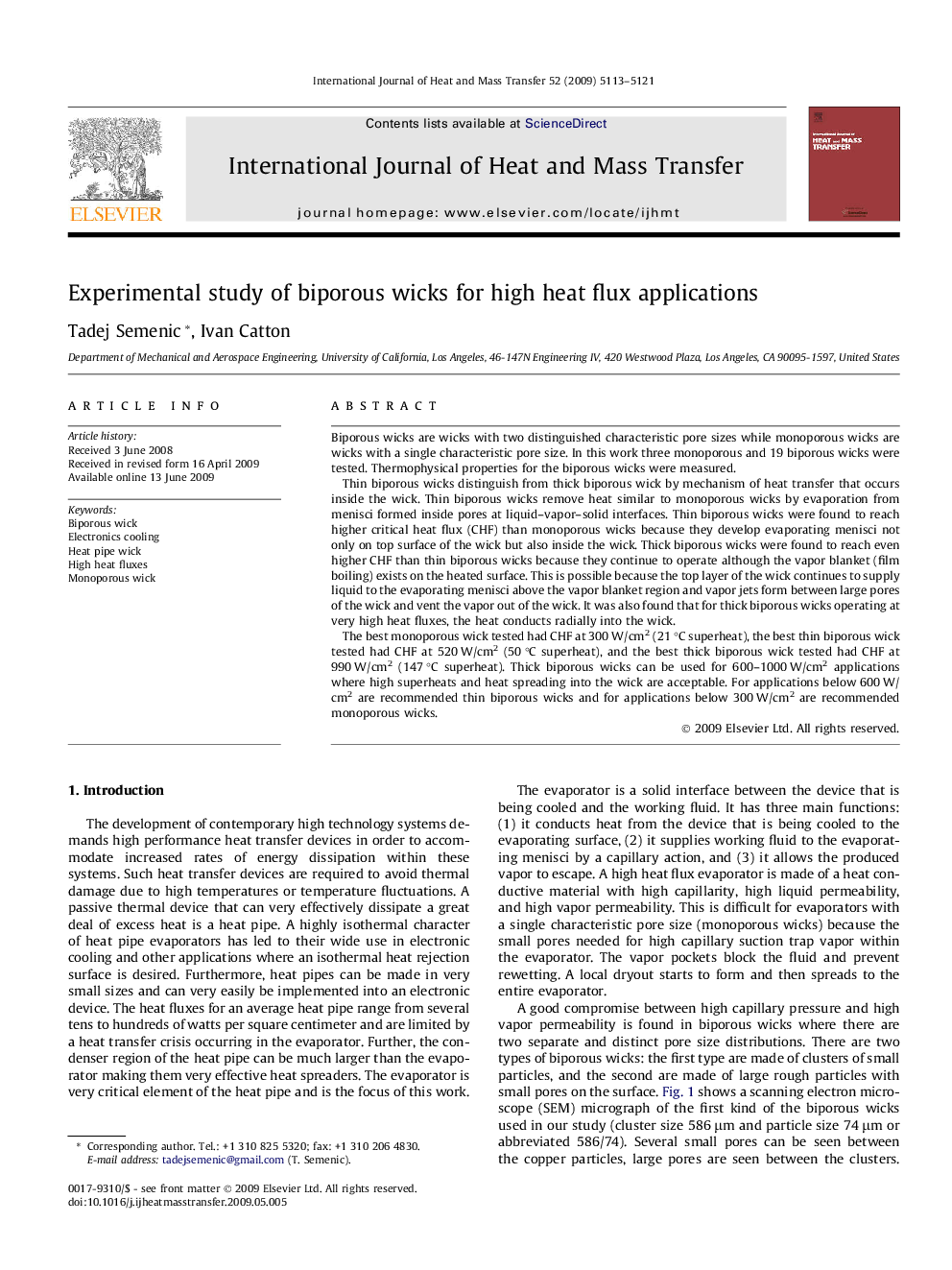| Article ID | Journal | Published Year | Pages | File Type |
|---|---|---|---|---|
| 661432 | International Journal of Heat and Mass Transfer | 2009 | 9 Pages |
Biporous wicks are wicks with two distinguished characteristic pore sizes while monoporous wicks are wicks with a single characteristic pore size. In this work three monoporous and 19 biporous wicks were tested. Thermophysical properties for the biporous wicks were measured.Thin biporous wicks distinguish from thick biporous wick by mechanism of heat transfer that occurs inside the wick. Thin biporous wicks remove heat similar to monoporous wicks by evaporation from menisci formed inside pores at liquid–vapor–solid interfaces. Thin biporous wicks were found to reach higher critical heat flux (CHF) than monoporous wicks because they develop evaporating menisci not only on top surface of the wick but also inside the wick. Thick biporous wicks were found to reach even higher CHF than thin biporous wicks because they continue to operate although the vapor blanket (film boiling) exists on the heated surface. This is possible because the top layer of the wick continues to supply liquid to the evaporating menisci above the vapor blanket region and vapor jets form between large pores of the wick and vent the vapor out of the wick. It was also found that for thick biporous wicks operating at very high heat fluxes, the heat conducts radially into the wick.The best monoporous wick tested had CHF at 300 W/cm2 (21 °C superheat), the best thin biporous wick tested had CHF at 520 W/cm2 (50 °C superheat), and the best thick biporous wick tested had CHF at 990 W/cm2 (147 °C superheat). Thick biporous wicks can be used for 600–1000 W/cm2 applications where high superheats and heat spreading into the wick are acceptable. For applications below 600 W/cm2 are recommended thin biporous wicks and for applications below 300 W/cm2 are recommended monoporous wicks.
